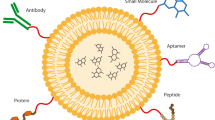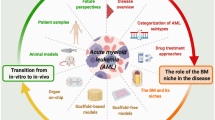Abstract
Recent studies have elucidated that transplantation of the bone marrow stromal cells (BMSC) has therapeutic potential for the central nervous system (CNS) disorders. However, no imaging modalities have been established to track the engrafted cells in the CNS in clinical situation. This study aimed to investigate the ability of magnetic resonance imaging (MRI) to visualize the BMSC labeled with superparamagnetic iron oxide (SPIO). The BMSC of mice were labeled with SPIO. Various numbers of the cells were injected into the agar phantom and were visualized using a 3.0-T MR apparatus. The SPIO-labeled cells were injected into the temperature-sensitive gelation polymer (TGP) hydrogel and were cultured for 7 days. They were also visualized just after the injection and at 7 days postinjection. After a 7-day culture, they were stained with Turnbull blue technique. T2-, T2*-, and susceptibility-weighted imaging could identify minimally 1,000 cells in the agar or TGP hydrogel, although it was difficult to quantify their number on MRI. All of these sequences could track the SPIO-labeled BMSC for at least 7 days when injected into the TGP. Turnbull blue staining revealed the survival and proliferation of the SPIO-labeled BMSC in the TGP for 7 days. The findings strongly suggest that the SPIO labeling may enable to track minimally 1,000 cells engrafted in the CNS on clinical MR apparatus. These data would be valuable to consider the application of imaging technique into cell transplantation therapy for CNS disorders.




Similar content being viewed by others
References
Bjorklund LM, Sanchez-Pernaute R, Chung S, Andersson T, Chen IY, McNaught KS, et al. Embryonic stem cells develop into functional dopaminergic neurons after transplantation in a Parkinson rat model. Proc Natl Acad Sci U S A. 2002;99:2344–9.
Kelly S, Bliss TM, Shah AK, Sun GH, Ma M, Foo WC, et al. Transplanted human fetal neural stem cells survive, migrate, and differentiate in ischemic rat cerebral cortex. Proc Natl Acad Sci U S A. 2004;101:11839–44.
Shichinohe H, Kuroda S, Lee JB, Nishimura G, Yano S, Seki T, et al. In vivo tracking of bone marrow stromal cells transplanted into mice cerebral infarct by fluorescence optical imaging. Brain Res Brain Res Protoc. 2004;13:166–75.
Shichinohe H, Kuroda S, Yano S, Ohnishi T, Tamagami H, Hida K, et al. Improved expression of gamma-aminobutyric acid receptor in mice with cerebral infarct and transplanted bone marrow stromal cells: an autoradiographic and histologic analysis. J Nucl Med. 2006;47:486–91.
Shichinohe H, Kuroda S, Yano S, Hida K, Iwasaki Y. Role of SDF-1/CXCR4 system in survival and migration of bone marrow stromal cells after transplantation into mice cerebral infarct. Brain Res. 2007;1183:138–47.
Shichinohe H, Kuroda S, Maruichi K, Osanai T, Sugiyama T, Chiba Y, et al. Bone marrow stromal cells and bone marrow-derived mononuclear cells: which are suitable as cell source of transplantation for mice infarct brain? Neuropathology. 2009;30:113–22.
Osanai T, Kuroda S, Yasuda H, Chiba Y, Maruichi K, Hokari M, et al. Noninvasive transplantation of bone marrow stromal cells for ischemic stroke: preliminary study with a thermoreversible gelation polymer hydrogel. Neurosurgery. 2010;66:1140–7. discussion 1147.
Brenneman M, Sharma S, Harting M, Strong R, Cox Jr CS, Aronowski J, et al. Autologous bone marrow mononuclear cells enhance recovery after acute ischemic stroke in young and middle-aged rats. J Cereb Blood Flow Metab. 2010;30:140–9.
Sugiyama T, Kuroda S, Takeda Y, Nishio M, Ito M, Shichinohe H, et al. Therapeutic impact of human bone marrow stromal cells (hBMSC) expanded by animal serum-free medium for cerebral infarct in rats. Neurosurgery. 2011;68:1733–42.
Sugiyama T, Kuroda S, Osanai T, Shichinohe H, Kuge Y, Ito M, et al. Near-infrared fluorescence labeling allows non-invasive tracking of bone marrow stromal cells transplanted into rat infarct brain. Neurosurgery. 2011;68:1036–47.
Yano S, Kuroda S, Lee JB, Shichinohe H, Seki T, Ikeda J, et al. In vivo fluorescence tracking of bone marrow stromal cells transplanted into a pneumatic injury model of rat spinal cord. J Neurotrauma. 2005;22:907–18.
Yano S, Kuroda S, Shichinohe H, Seki T, Ohnishi T, Tamagami H, et al. Bone marrow stromal cell transplantation preserves gammaaminobutyric acid receptor function in the injured spinal cord. J Neurotrauma. 2006;23:1682–92.
Sykova E, Homola A, Mazanec R, Lachmann H, Konradova SL, Kobylka P, et al. Autologous bone marrow transplantation in patients with subacute and chronic spinal cord injury. Cell Transplant. 2006;15:675–87.
Itosaka H, Kuroda S, Shichinohe H, Yasuda H, Yano S, Kamei S, et al. Fibrin matrix provides a suitable scaffold for bone marrow stromal cells transplanted into injured spinal cord: a novel material for CNS tissue engineering. Neuropathology. 2009;29:248–57.
Chiba Y, Kuroda S, Shichinohe H, Hokari M, Osanai T, Maruichi K, et al. Synergistic effects of bone marrow stromal cells and a Rho kinase (ROCK) inhibitor, Fasudil on axon regeneration in rat spinal cord injury. Neuropathology. 2010;30:241–50.
Chiba Y, Kuroda S, Maruichi K, Osanai T, Hokari M, Yano S, et al. Transplanted bone marrow stromal cells promote axonal regeneration and improve motor function in a rat spinal cord injury model. Neurosurgery. 2009;64:991–9. discussion 999–1000.
Mahmood A, Lu D, Wang L, Li Y, Lu M, Chopp M. Treatment of traumatic brain injury in female rats with intravenous administration of bone marrow stromal cells. Neurosurgery. 2001;49:1196–203. discussion 203–4.
Yasuda H, Kuroda S, Shichinohe H, Kamei S, Kawamura R, Iwasaki Y. Effect of biodegradable fibrin scaffold on survival, migration, and differentiation of transplanted bone marrow stromal cells after cortical injury in rats. J Neurosurg. 2010;112:336–44.
Maruichi K, Kuroda S, Chiba Y, Hokari M, Shichinohe H, Hida K, et al. Transplanted bone marrow stromal cells improves cognitive dysfunction due to diffuse axonal injury in rats. Neuropathology. 2009;29:422–32.
Shichinohe H, Kuroda S, Sugiyama T, Ito M, Kawabori M. Bone marrow stromal cell transplantation attenuates cognitive dysfunction due to chronic cerebral ischemia in rats. Dement Geriatr Cogn Disord. 2010;30:293–301.
Bliss T, Guzman R, Daadi M, Steinberg GK. Cell transplantation therapy for stroke. Stroke. 2007;38:817–26.
Parr AM, Tator CH, Keating A. Bone marrow-derived mesenchymal stromal cells for the repair of central nervous system injury. Bone Marrow Transplant. 2007;40:609–19.
Kuroda S, Shichinohe H, Houkin K, Iwasaki Y. Autologous bone marrow stromal cell transplantation for central nervous system disorder—recent progress and perspective for clinical application. J Stem Cell Regen Med. 2011;7:2–13.
Azizi SA, Stokes D, Augelli BJ, DiGirolamo C, Prockop DJ. Engraftment and migration of human bone marrow stromal cells implanted in the brains of albino rats—similarities to astrocyte grafts. Proc Natl Acad Sci U S A. 1998;95:3908–13.
Kopen GC, Prockop DJ, Phinney DG. Marrow stromal cells migrate throughout forebrain and cerebellum, and they differentiate into astrocytes after injection into neonatal mouse brains. Proc Natl Acad Sci U S A. 1999;96:10711–6.
Bang OY, Lee JS, Lee PH, Lee G. Autologous mesenchymal stem cell transplantation in stroke patients. Ann Neurol. 2005;57:874–82.
Lee PH, Kim JW, Bang OY, Ahn YH, Joo IS, Huh K. Autologous mesenchymal stem cell therapy delays the progression of neurological deficits in patients with multiple system atrophy. Clin Pharmacol Ther. 2008;83:723–30.
Lee J, Kuroda S, Shichinohe H, Ikeda J, Seki T, Hida K, et al. Migration and differentiation of nuclear fluorescence-labeled bone marrow stromal cells after transplantation into cerebral infarct and spinal cord injury in mice. Neuropathology. 2003;23:167–78.
Jendelova P, Herynek V, DeCroos J, Glogarova K, Andersson B, Hajek M, et al. Imaging the fate of implanted bone marrow stromal cells labeled with superparamagnetic nanoparticles. Magn Reson Med. 2003;50:767–76.
Walczak P, Zhang J, Gilad AA, Kedziorek DA, Ruiz-Cabello J, Young RG, et al. Dual-modality monitoring of targeted intraarterial delivery of mesenchymal stem cells after transient ischemia. Stroke. 2008;39:1569–74.
de Haro J, Zurita M, Ayllon L, Vaquero J. Detection of 111In-oxine-labeled bone marrow stromal cells after intravenous or intralesional administration in chronic paraplegic rats. Neurosci Lett. 2005;377:7–11.
Kim YB, Bae KH, Yoo SS, Park TG, Park H. Positive contrast visualization for cellular magnetic resonance imaging using susceptibility-weighted echo-time encoding. Magn Reson Imaging. 2009;27:601–10.
Hoehn M, Kustermann E, Blunk J, Wiedermann D, Trapp T, Wecker S, et al. Monitoring of implanted stem cell migration in vivo: a highly resolved in vivo magnetic resonance imaging investigation of experimental stroke in rat. Proc Natl Acad Sci U S A. 2002;99:16267–72.
Yano S, Kuroda S, Shichinohe H, Hida K, Iwasaki Y. Do bone marrow stromal cells proliferate after transplantation into mice cerebral infarct?—a double labeling study. Brain Res. 2005;1065:60–7.
Rad AM, Arbab AS, Iskander AS, Jiang Q, Soltanian-Zadeh H. Quantification of superparamagnetic iron oxide (SPIO)-labeled cells using MRI. J Magn Reson Imaging. 2007;26:366–74.
Langley J, Liu W, Jordan EK, Frank JA, Zhao Q. Quantification of SPIO nanoparticles in vivo using the finite perturber method. Magn Reson Med. 2011;65:1461–9.
Acknowledgment
This study was supported by grant-in-aid from the Ministry of Education, Science and Culture of Japan (no. 20390377, no. 20591701, no. 21390400, and no. 23390342).
Author information
Authors and Affiliations
Corresponding author
Rights and permissions
About this article
Cite this article
Shichinohe, H., Kuroda, S., Kudo, K. et al. Visualization of the Superparamagnetic Iron Oxide (SPIO)-Labeled Bone Marrow Stromal Cells Using a 3.0-T MRI—a Pilot Study for Clinical Testing of Neurotransplantation. Transl. Stroke Res. 3, 99–106 (2012). https://doi.org/10.1007/s12975-011-0138-5
Received:
Revised:
Accepted:
Published:
Issue Date:
DOI: https://doi.org/10.1007/s12975-011-0138-5




